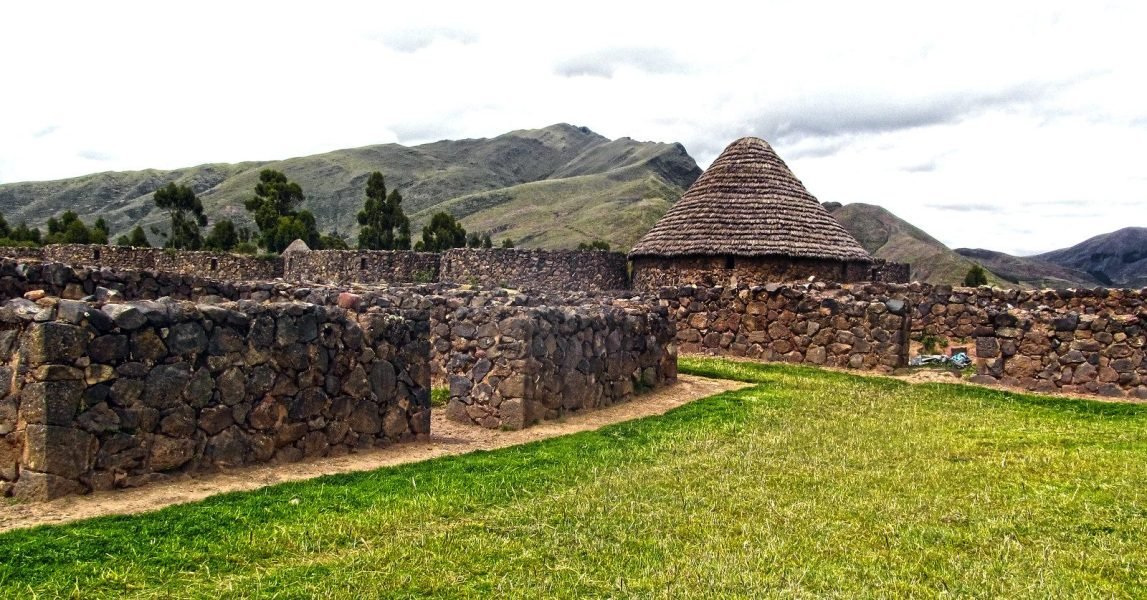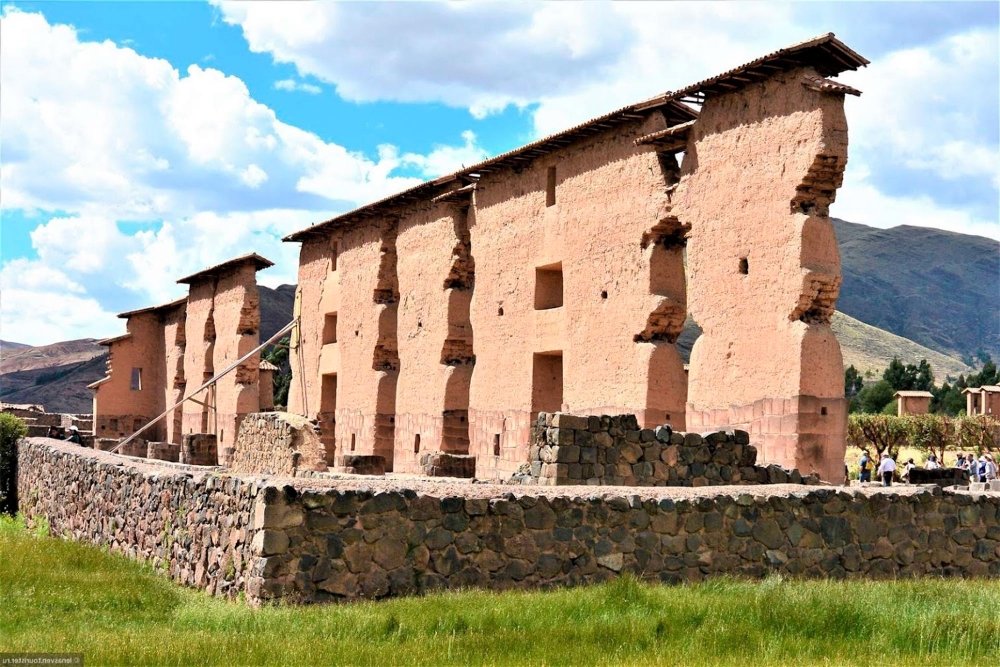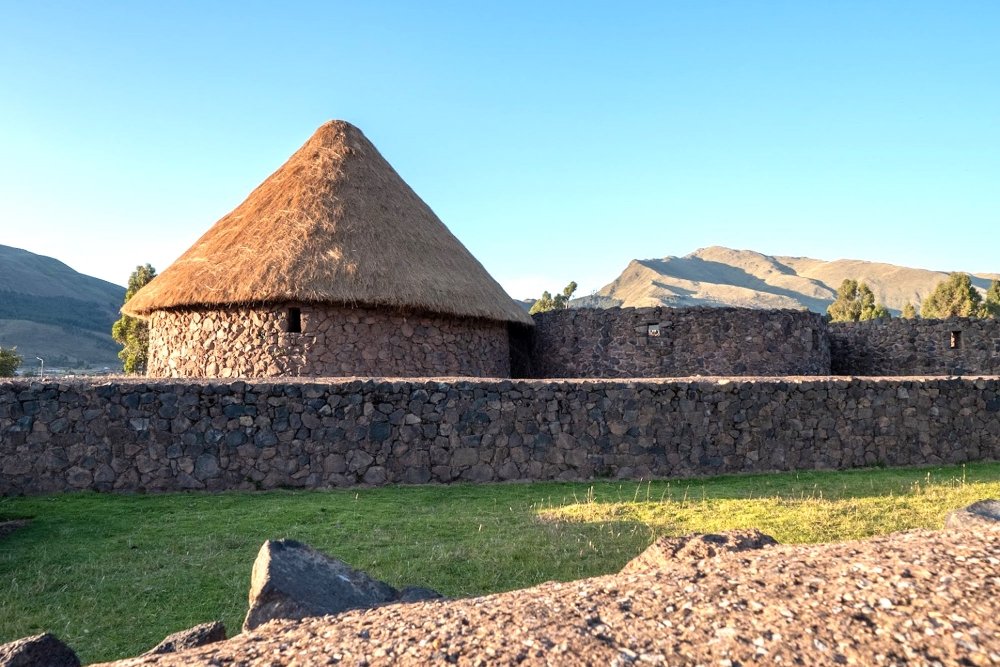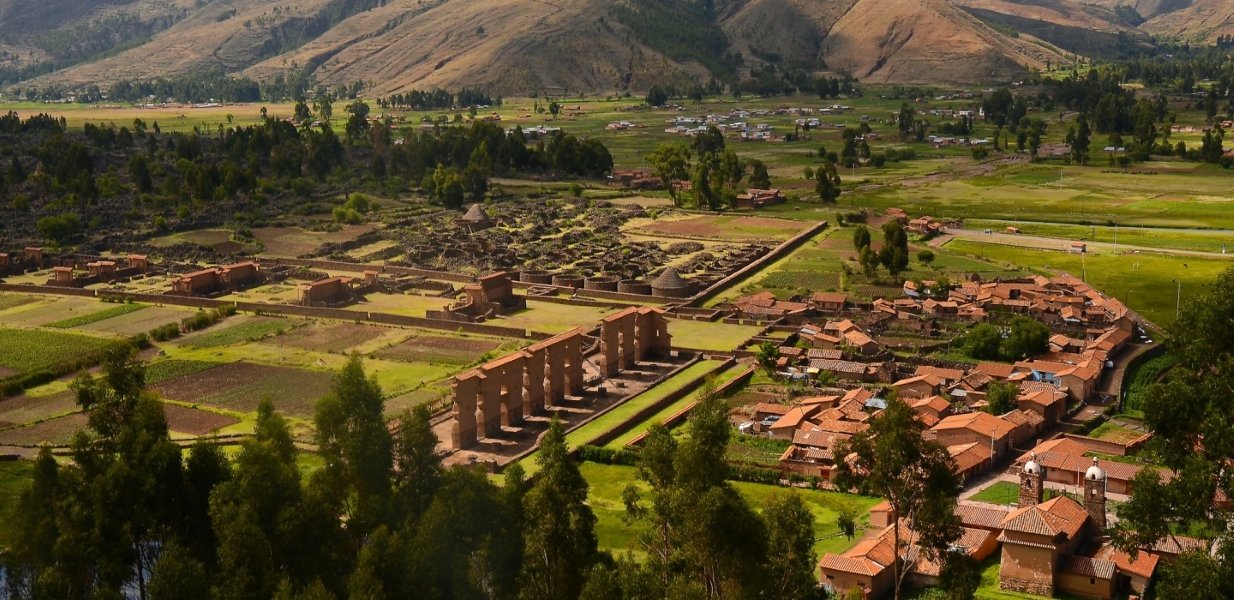Archaeological Complex of Raqchi | Cusco
The word “Raqchi” is of Quechua origin, the language of the Incas and still spoken by many people in Peru and parts of the Andes. “Raqchi” can have several possible meanings in Quechua, depending on the context and interpretation. However, in the context of the archaeological site of Raqchi in Peru, “Raqchi” is commonly translated as “place where they weave cloth”, “place where they sow” or “place where they weave”. These meanings are related to the history and culture of the Incas, as Raqchi was an important ceremonial and agricultural center during the Inca Empire.
It is located at an altitude of approximately 3,500 meters above sea level (approximately 11,500 feet). This means that, like other places in the Cusco region, Raqchi is located at a considerable altitude, which may affect some people, especially if they are not used to high altitudes.
The archaeological complex of Raqchi is a popular destination for tourists visiting the Cusco region, as it offers the opportunity to explore the history and architecture of the Inca Empire in an impressive setting.
History of Archaeological Complex of Raqchi | Cusco
The history of Raqchi, also known as the Temple of Wiracocha, dates back to the period of the Inca Empire in the 15th century. This archaeological complex was built by the Incas as a ceremonial and administrative center, possibly dedicated to the cult of the god Wiracocha, one of the main deities of the Inca pantheon.

- Pre-Inca times
Before the arrival of the Incas, Raqchi and its surroundings were inhabited by pre-Inca populations. Evidence of human occupation has been found in the area dating from periods prior to the expansion of the Inca Empire.
- Inca period (15th – 16th century)
During the height of the Inca Empire, Raqchi was developed and converted into an important ceremonial and administrative center. The Temple of Wiracocha, one of the most outstanding structures in the complex, was built during this period and probably served as a place of worship for the Inca deity Wiracocha.
-
Time of the Spanish conquest (16th century)
With the arrival of the Spanish and the conquest of the Inca Empire in the 16th century, Raqchi was abandoned and fell into oblivion. The Incas were displaced and the region became part of the Viceroyalty of Peru under Spanish rule.
- Colonial period (XVI – XIX century)
During the Spanish colonial period, Raqchi and its surroundings were subject to mining and agricultural exploitation by the colonizers. However, the archaeological site of Raqchi did not receive much attention during this period and remained in ruins.
- Modern period (20th century – present)
Raqchi was rediscovered by archaeologists in the 20th century and has since been the subject of studies and excavations to better understand its history and significance in the Inca civilization. Today, the Raqchi archaeological complex is a major tourist attraction in the Cusco region, where thousands of visitors flock each year to admire the impressive Inca structures and learn more about the history and culture of this fascinating civilization.

What to see in the Raqchi Archaeological Complex?
At Raqchi, there are several structures and features worth exploring:
- Temple of Wiracocha: This is the most prominent structure in Raqchi. The Temple of Wiracocha is an impressive building consisting of a long stone wall with twenty niches juxtaposed inside. It also has a series of cylindrical columns that formed a corridor or courtyard around the main structure.
- Walls and enclosures: In addition to the Temple of Wiracocha, Raqchi has a series of walls and enclosures that were part of a larger complex. These structures show the skill and engineering of the Incas in the construction of stone buildings.
- Main plaza: In the center of the Raqchi complex is a large open plaza that was probably used for ceremonies and social events. Around the plaza, you can see different structures and enclosures that probably had different purposes within the complex.
- Site Museum: In the Raqchi complex there is also a small site museum where archaeological artifacts found in the area are exhibited, as well as information about the history and culture of the Incas.
Exploring Raqchi will allow you to immerse yourself in the history and architecture of the Inca Empire and appreciate the magnificence of these ancient structures.
How to get to Raqchi Archaeological Complex?
Here are some options to get to the archaeological complex of Raqchi from the city of Cusco:
- Organized tour: Many travel agencies in Cusco offer tours that include a visit to Raqchi in their itinerary. This is usually the most convenient way to get there, as transportation and guide are included.
- Car rental: You can rent a car in Cusco and drive on your own to Raqchi. The main road connecting Cusco with Puno passes close to Raqchi, making it easy to reach by car.
- Bus to Sicuani: Take a bus from Cusco to the town of Sicuani, which is near Raqchi. From Sicuani, you can take a cab or mototaxi to the archaeological complex.
These are the main options for getting to Raqchi from Cusco. Each has its own advantages and considerations, so choose the one that best suits your preferences and travel needs.

Recommendations for getting to Raqchi
When visiting Raqchi, consider the following recommendations to make the most of your experience:
- Acclimatization to the altitude: Raqchi is at a considerable altitude, as is the city of Cusco and other parts of the region. Keep in mind that the altitude can affect your health, so make sure you acclimatize properly before setting out on your trip. Get plenty of rest, drink plenty of water and avoid alcohol and heavy food in your first days in the region.
- Sun protection and shelter: The weather in Raqchi can vary, so bring sunscreen, hat or cap, sunglasses and a light jacket or raincoat in case of sudden temperature changes or rain.
- Comfortable shoes: Visiting the Raqchi archaeological complex may require moderate walking, so be sure to wear comfortable shoes suitable for walking, preferably with non-slip soles.
- Water and snacks: Bring enough water to keep you hydrated during the visit, especially if you plan to explore the site for several hours. Also, consider bringing some energy snacks to replenish your energy during the tour.
- Respect for the site: Raqchi is an important and protected archaeological site, so respect the signs and restricted areas. Do not leave trash or damage ancient structures and follow the instructions of the guides and site staff.
- Take advantage of the guide: If possible, hire a local guide or join an organized tour for a more enriching experience. Guides can provide invaluable information about the history and culture of the site, as well as share local stories and legends.
By following these recommendations, you can enjoy a safe and rewarding visit to the Raqchi archaeological complex and appreciate the magnificence of these ancient Inca structures.












